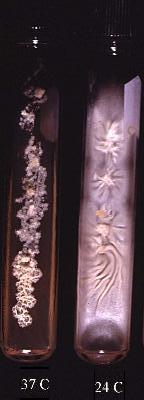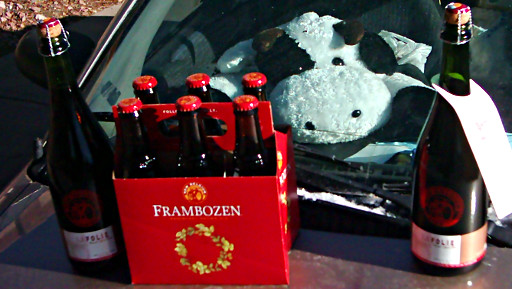
Just a brief point first: President Obama in his inaugural address promised to “restore science to its rightful place.” In traditional fashion, this prompted all manner of verbosity on blogs around the web concerning just what science’s rightful place actually is. Let me just take a moment to settle this question:
Science’s rightful place is kneeling at my feet in supplication and doing my bidding! AH, HA HA HA HA HA!!!!!
But that’s not what I came here to post about. Instead, I wanted to mention a paper I finally got my hands on. You may recall that some time back there were a few stories that popped up about what was said to be a “you can’t get drunk on beer” paper published back in the 1950’s. As usual, the people doing the reporting couldn’t be bothered to actually cite the paper in question, but I figured out which one it was. The paper is this one:
Greenberg LA:”The Definition of an Intoxicating Beverage”; Q J Stud Alcohol. 1955 Jun;16(2):316-25.
I have that paper. And I am quite disappointed in it in much the same way I was with Linus Pauling’s paper proposing a triple-helix structure for DNA. I did, though, learn some interesting things from Greenberg’s paper.
It turns out that the paper actually concerns the legal definition of “intoxication” and whether or not, based on this definition, beer should be classified as an “intoxicating beverage”. Greenberg actually raises some good points…but first, some amusement:
“The average alcohol content of American beers is 3.7 per cent[…]The strongest ale is 4.2 per cent” (page 320, paragraph 4)
Unfortunately, this isn’t quite as funny as it sounds, because the part I clipped out of that quote is where he says “by weight”. It’s still kinda funny though, since that would mean, in mass-market-bladderwash terms, that “The Strongest Ale” is Heineken.
—
This Alcohol-by-Weight-vs-Volume issue may actually be part of why American beers have a reputation for having watery, feeble beers. It evidently used to be that places like Canada were using alcohol-by-volume, while the US was using alcohol-by-weight on their labels. An otherwise-identical beer bottled in Canada would have a higher “percent alcohol” on the label than the US-bottled version, making it seem as though the American version was weaker. So, evidently it’s not really true…things like “Coors Lite” notwithstanding. (See this recent page at Fermentarium.com for more details.)
—
But back to the point of the paper…evidently as Greenberg was writing this paper half a century ago, there wasn’t a clear, quantitative scientific or legal definition for “intoxication”. He points out that you can’t just define it in terms of alcohol merely having noticeable effects on the drinker, since the magnitude of the unpleasant effects at low to moderate drinking levels aren’t really much different than that for (for undesirable effects) lack of sleep, distraction [remember all those studies saying talking on the cell-phone while driving is as bad as being drunk?], hunger and so forth. For that matter, I think we can all see the problem of trying to arrest anyone who is being relaxed and amiable for “public intoxication”.
Greenberg solves this problem by looking at the average blood-alcohol concentration of people arrested for “intoxication” (0.21% back in the 1950’s, evidently), and a couple of previous studies from the 1920’s and 1930’s, and he finally settles on 0.15% Blood Alcohol Concentration as a level he’ll use as the line for “definitely intoxicated”. He then proceeds to go through the common classes of alcohol-containing beverages to determine how easy it is for someone to consume enough to reach this BAC.
In summary – For hard liquor, and average person would have to consume 8 ounces plus one ounce per hour of drinking (for example, 9 ounces consumed over the course of one hour). That’s not a difficult quantity to fit into a typical stomach, so hard liquor is obviously an “intoxicating beverage”. Fortified wines (like Port, Madiera…or Thunderbird): about 18 ounces plus 2 ounces per hour – say, a pint and a half in about 4 hours. Still pretty easy to do. An ordinary wine (like, say, a Gewürtztraminer): 36 ounces plus 4 ounces/hour – or a 7-11 “Super Big Gulp®”-sized portion in two or three hours. Getting to be a fairly substantial amount of liquid, but still plausible.
And then there’s beer. Greenberg comes up with a figure of 80 ounces + 10 ounces/hour. That’s roughly three quarts within one hour, which is quite a bit more than the approximately 2 quarts that a human stomach can hold. He goes on to describe several controlled experiments on beer consumption and the resulting blood-alcohol concentration. By pushing one group to consume a gallon and a half of beer over a period of 8 hours, they were able to get up to an average of just under “intoxicated” (by Greenberg’s definition) at 0.13%. The rate of beer ingestion required to pass the “intoxication” threshhold was more than most test subjects could even manage. Therefore (Greenberg concludes) beer should probably not actually be classified as an “intoxicating beverage”
Now for the party-poopery: Greenberg explicitly points out that this is certainly not the same as saying that beer cannot impair a drinker’s performance or judgement, so just because you haven’t consumed anything stronger than beer it doesn’t mean you should be allowed behind the wheel of a steamroller. Nor does it mean that it’d be okay for an alcoholic to drink beer (since an alcoholic is very unlikely to stop with just beer). Furthermore, these days “intoxicated” is legally about half of the level that Greenberg is using – 0.08% in most places in the US as far as I can tell. By Greenberg’s measure, you can easily get that amount of alcohol out of a pitcher of beer consumed over an hour.
So, Greenberg isn’t crazy, and beer can still make you drunk, just as we all would expect. How disappointing. Still, it’s an interesting paper and I’m glad I dug it up.
On a related note, if I can get my hands on an old paper from the Journal of the Institute of Brewing, I may have found my selection for February’s Giant’s Shoulders blog carnival. Stay tuned, more to come…
 According to the nutrition information on the back of the bag and some quick calculations, powdered Xanthan Gum has a density of a little over 610mg/ml (or about 10 slugs/hogshead).
According to the nutrition information on the back of the bag and some quick calculations, powdered Xanthan Gum has a density of a little over 610mg/ml (or about 10 slugs/hogshead).

![Note the blank stare and the fixed smile. Poor mascot-kid lacks the mental faculties to even realize the cruel trick played upon him by Margarine...(Photo by 'Arimoore' on Flickr[tm]) 'Happy Boy' brand margarine, with creepy-looking blank-eyed 'smiling' kid on the box](http://farm1.static.flickr.com/37/86900213_5e991bb839_m_d.jpg)






